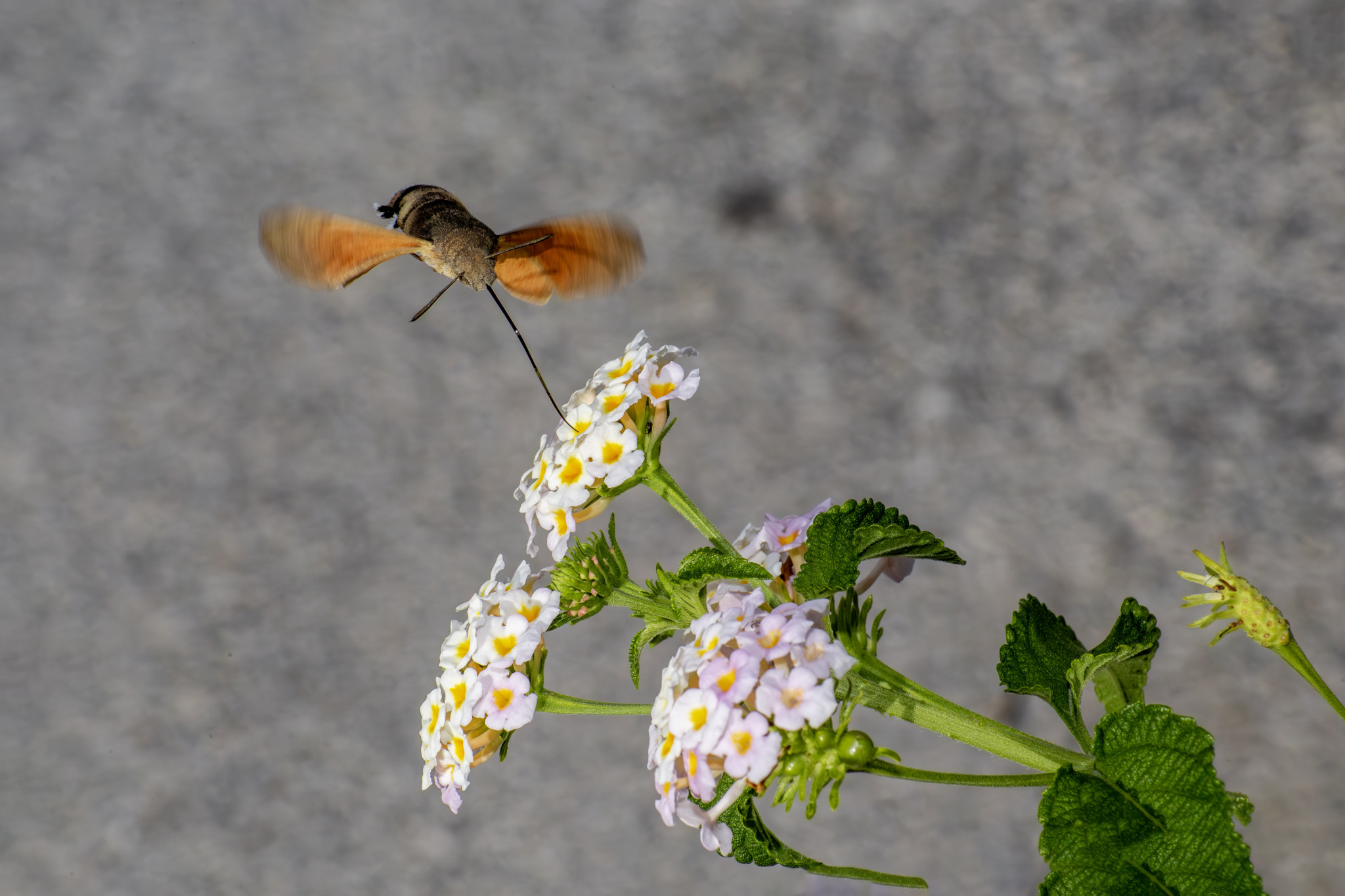The Hummingbird Hawk Moth (Macroglossum stellatarum) is a fascinating moth known for its hummingbird-like appearance and behavior. This moth is part of the family Sphingidae and is notable for its ability to hover in front of flowers while feeding, much like a hummingbird.
Description
- Appearance:
- Wingspan: Approximately 40-45 millimeters.
- Coloration: The forewings are grayish-brown with darker lines and a few light spots, while the hindwings are orange with a black border. The body is robust and furry, typically grayish-brown with white bands on the abdomen.
- Proboscis: They have a long proboscis, often longer than their body, used for feeding on nectar.
Habitat
- Distribution: The Hummingbird Hawk Moth is found throughout Europe, North Africa, and parts of Asia. It is also known to migrate, reaching as far north as Scandinavia and occasionally the British Isles.
- Preferred Environment: This moth inhabits a variety of environments including gardens, meadows, open woodlands, and coastal areas. They are particularly attracted to areas with abundant flowers.
Behavior and Ecology
- Diet:
- Adults: The adults primarily feed on nectar from a variety of flowering plants, including petunias, honeysuckle, and phlox. They prefer flowers with long corolla tubes.
- Larvae: Caterpillars feed on plants from the Rubiaceae (bedstraw) and Caprifoliaceae (honeysuckle) families.
- Activity:
- Diurnal and Crepuscular: Unlike many moths, the Hummingbird Hawk Moth is active during the day (diurnal) and at dusk (crepuscular), particularly in warm, sunny weather.
- Flight:
- Their flight is rapid and agile, resembling that of a hummingbird. They can hover in place and make quick, darting movements from flower to flower.
Life Cycle
- Egg: Eggs are laid singly on the host plants. They are small, spherical, and pale green.
- Larva (Caterpillar): The caterpillars are green with white and yellow stripes and a prominent horn at the rear. They feed on the leaves of host plants.
- Pupa (Chrysalis): Pupation occurs in a loose cocoon among leaf litter or soil. The pupa is brown and cylindrical.
- Adult: The adult moth emerges from the pupa, ready to begin its life as a nectar-feeding pollinator.
Conservation
- Status: The Hummingbird Hawk Moth is not considered threatened and is relatively common within its range.
- Conservation Efforts: Conservation focuses on preserving habitats with abundant flowering plants and host plants for larvae. Reducing pesticide use and maintaining garden habitats can support their populations.
Observing Hummingbird Hawk Moths
- Best Times: They are most active from late spring through early autumn.
- Watching Tips: Look for them hovering around flowers in gardens and meadows during the day and at dusk. Their hummingbird-like flight and appearance make them easy to spot.
Interesting Facts
- Mimicry: Their resemblance to hummingbirds is an excellent example of convergent evolution, where unrelated species evolve similar traits.
- Speed and Agility: They can beat their wings up to 85 times per second, allowing them to hover and maneuver with great precision.
- Migration: Some populations are migratory, traveling long distances to find suitable breeding grounds.
Summary
The Hummingbird Hawk Moth (Macroglossum stellatarum) is a remarkable moth known for its distinctive hummingbird-like behavior and appearance. Found across Europe, North Africa, and Asia, it is an agile flyer that feeds on nectar from a variety of flowers. Observing this moth provides a unique glimpse into the wonders of mimicry and the intricate relationships between pollinators and flowering plants. Its presence in gardens and meadows highlights the importance of conserving habitats rich in floral diversity.
Views: 390
Subscribe to the newsletter:
